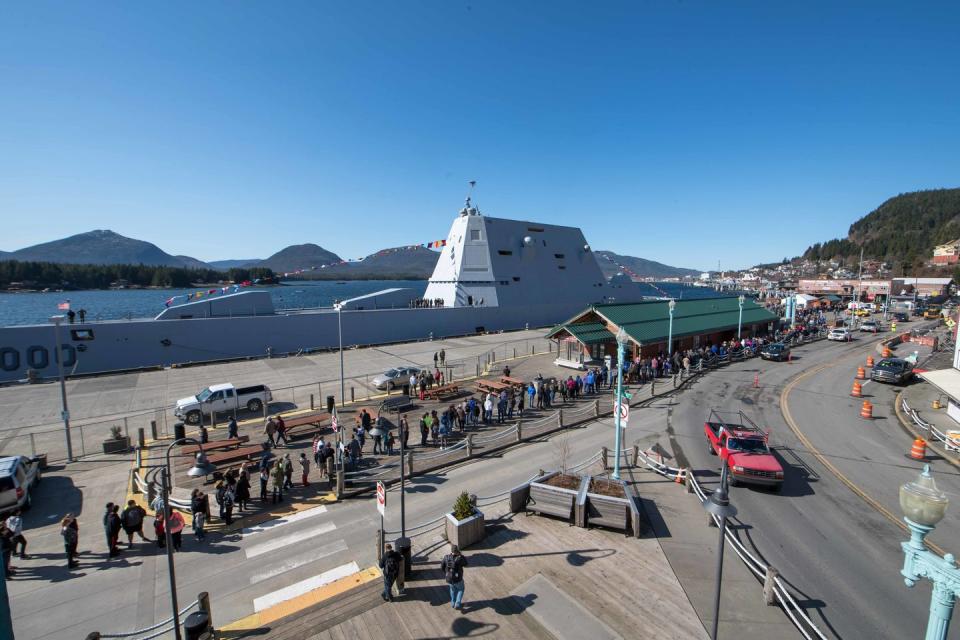How the Zumwalt’s Strange Design Actually Helps It Handle Rough Waters

Critics of the Zumwalt-class destroyers have worried that the ship's design could lead to instability at sea.
The destroyer uses a unique "tumblehome hull” design.
According to sailors that have spent time on the ship at sea, it actually handles rough seas better than most ships.
The U.S. Navy’s newest destroyer is a “better ride” in rough seas than other ships, thanks to the shape of the hull and other factors. The USS Zumwalt, with its knifelike bow, is more stable in heavy seas that other destroyers and cruisers. A trip through rough seas on a recent visit to Alaska confirmed the design’s superiority, countering critics who believed early on that the Zumwalt would be less seaworthy than conventional designs.
According to Defense News, USS Zumwalt encountered rough seas while traveling last March to Alaska. The seas were technically Sea State Six, which is defined as “winds at 22 to 27 knots, waves of 9-13 feet.” On many ships—even large ones—traveling through such seas is an unpleasant experience.
Zumwalt, on the other hand, handled conditions better than most ships its size. At one point the commanding officer of the ship, Captain Andrew Carlson, was told by his second in command that the ship was in Sea State Six but later said it felt as though they were only in Sea State Three, where waves average only 2 to 3 feet.

Unlike most contemporary warships—or any ships for that matter—the Zumwalt uses a so-called “tumblehome” hull. The hull widens as it nears the water, and at the bow at the water’s edge is longer than it is on the main deck. The result is a ship that looks like a knife cutting through water, giving it a sleek, stealthy look.
During the Zumwalt’s construction period, outside observers questioned the use of the tumbledown hull, speculating that it could lead to a less stable ship. Some experts even believed under certain conditions it would capsize, leading to complete loss of the ship.
“"We feel very confident in the hull form," said Allison Stiller, the deputy assistant secretary of the Navy for ship programs told Defense News in 2007. "We've done all the modeling and testing to convince us that this is a great hull form."
The Zumwalt reportedly quickly rights itself in rough waters, faster than other designs. Sailors also described turns as more of a “drift” or slide through the water than other ships. Captain Carlson attributed the Zumwalt’s stability to hull form, relative location of the rudder stops, and the size of the propellers.
Looks like the Zumwalt-class destroyers appear to be one of the smoothest rides in the Navy.
Source: Defense News
You Might Also Like


